AC VS. DC Power: What Is The Difference Between AC and DC
In the electrical world, there are two main types of power: Alternating Current (AC) and Direct Current (DC). They have unique characteristics that make them important in our lives. This article explains why AC and DC are significant in our power systems and the difference between AC and DC.
AC power flows back and forth, making it suitable for homes and buildings. DC power flows in one direction and is essential for batteries and electronics. Together, they create a balanced power system.
Jackery's solar generators convert DC power from sources like solar panels into reliable AC power using pure sine wave inverters. This makes them perfect for camping, emergencies, and more.
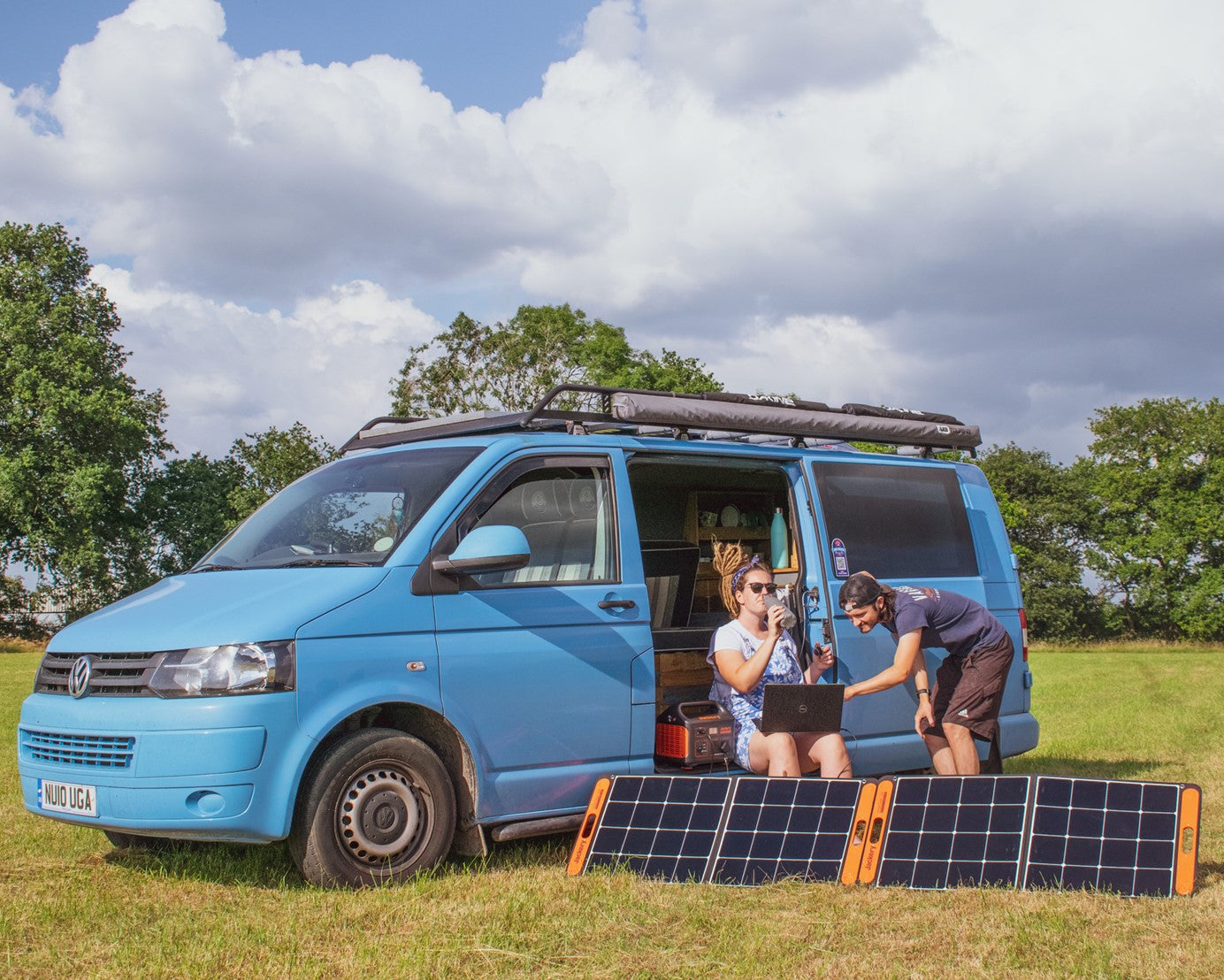
|
Products |
Image |
Capacity |
Peak Power Output |
Inverter |
Battery |
|
Solar Generator 1000 |
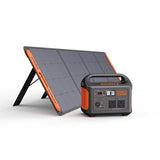 |
1002Wh |
2000W |
110 V, 1000W |
Lithium-ion 500 cycles to 80%+ capacity |
|
Solar Generator 500 |
 |
518Wh |
1000W |
110 V, 500W |
LI-ION NMC 500 cycles to 80%+ capacity |
|
Solar Generator 300 Plus |
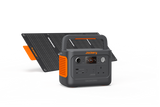 |
288Wh |
600W |
120 V, 300W |
Lithium Iron Phosphate (LiFePO4) 3000 cycles to 80%+ capacity |
What Is Alternating Current (AC)?
Alternating Current, or AC, is a type of electricity that constantly changes its flow direction. Unlike the steady flow of Direct Current (DC), AC keeps switching back and forth, making the electric charges in wires move in a wiggly path.
How Does AC Work?
AC is made by spinning a coil of wire in a magnetic field, using a generator device. This spinning motion creates AC electricity. It's like a dance where the electric current goes forward and then backward.
|
Pros |
Cons |
|
AC can be easily transformed into different voltage levels |
Conversion to DC may be needed for certain electronic devices |
|
It's ideal for long-distance power transmission |
It's less suitable for batteries, which use DC |
|
AC motors are efficient and widely used in appliances |
AC needs to be converted to DC |
Waveform and Application of AC:
AC waveform varies, but a common type is the sinusoidal waveform, represented as a smooth, continuous curve that alternates between positive and negative values.
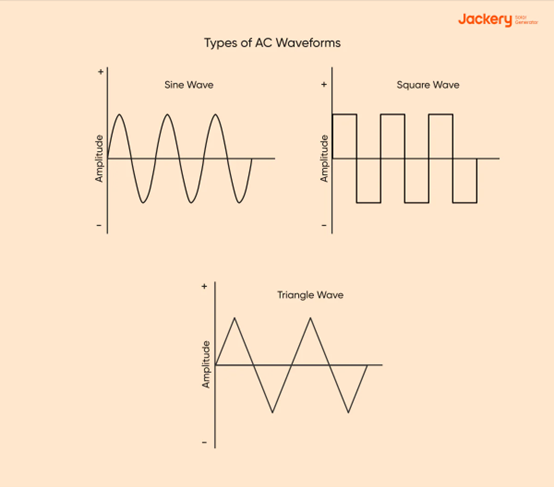
Types of AC are:
- Single-phase AC: Used in homes
- Three-phase AC: Used in factories
Most household appliances, such as lamps, televisions, refrigerators, and air conditioners, run on AC power due to their versatility and ability to provide necessary voltage levels for these devices.
What Is Direct Current (DC)?
Direct Current, or DC, is a type of electricity that flows steadily in one direction. Unlike Alternating Current (AC), which changes direction, DC keeps moving in a straight line.
How Does DC Work?
DC is produced using a device called a rectifier, which converts AC into DC. It's like a river that always flows in the same direction, without any back-and-forth.
|
Pros |
Cons |
|
Many devices, like batteries and electronics, use DC power directly |
Transmitting DC over long distances is less efficient than AC |
|
It's more stable for sensitive equipment |
Converting AC to DC can be wasteful |
Waveform of DC and Its Applications
DC power appears as a straight, horizontal line on a graph, indicating a constant flow in one direction.

DC is commonly used in:
- Batteries for portable devices
- Electric vehicles, like cars and bikes
- Electronic gadgets like smartphones and laptops
- Solar panels and wind turbines often produce DC power
AC VS. DC: What Are The Differences?
If you are still wondering, what is the difference between AC and DC, we are here to help you.
Here's a table summarising the key differences between Alternating Current (AC) and Direct Current (DC):
|
Characteristic |
AC (Alternating Current) |
DC (Direct Current) |
|
Direction of Flow |
Reverses direction regularly |
Flows in one direction |
|
Voltage Levels |
Voltage can vary over time |
Voltage remains constant |
|
Power Generation |
Easily generated by generators |
Generated by batteries, solar panels, etc. |
|
Transmission Efficiency |
Efficient over long distances |
Less efficient over long distances |
|
Waveform |
Sinusoidal (sine wave) |
Constant voltage level |
|
Common Usage |
Household electricity, appliances |
Batteries, electronics, vehicles, etc. |
|
Conversion |
Easy to convert to DC (rectification) |
Requires conversion for AC devices |
These differences define how AC and DC are used in various applications, from powering your home to running your electronic devices and vehicles.
AC VS. DC: Which One Is Important?
AC and DC are both important. The difference between AC and DC is quite clear.
Alternating Current (AC) is crucial for powering our homes and most household appliances. This is because it's efficient for long-distance transmission and can be easily transformed to different voltage levels.
On the other hand, Direct Current (DC) plays a vital role in electronics, batteries, and many portable devices like smartphones and laptops.
Modern technology relies on both AC and DC. When you charge your phone, AC is used for long-distance transmission from the power plant to your home. But your charger converts it to DC for your phone's battery. That's why both play a role together to provide us with electricity.
How to Convert AC into DC?
To change Alternating Current (AC) into Direct Current (DC), we use devices called rectifiers. These devices let the electric current flow in just one direction, turning AC into DC. This works because of two important laws in electricity.
Ohm's Law, tells us that voltage (V) equals current (I) times resistance (R). In the case of rectifiers, this resistance allows the electric current to move in one direction, making it DC.
Faraday's Law explains how we make AC electricity using things like solar panels. When we want to turn this AC power back into DC, we use something called an inverter. The inverter takes the DC electricity from the solar panels and turns it into AC electricity that we can use in our homes and devices.
In simple terms, rectifiers and inverters help us change electricity from AC to DC and vice versa, making it useful for all our daily needs.
Jackery Solar Generators with Pure Sine Wave Inverters
Jackery is a leading brand in portable power solutions, specialising in solar generators. Jackery Solar Generators are innovative, clean energy solutions designed to provide reliable and portable power.
They work by harnessing solar energy through solar panels, converting it into electrical power, and storing it in a high-capacity lithium-ion battery. This stored energy can then be used to power various devices and appliances, making it an ideal solution for outdoor adventures, emergencies, and off-grid living.
This is how they work:
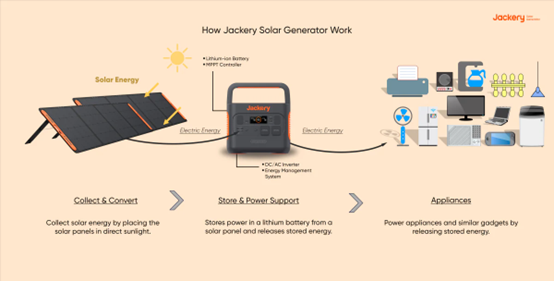
Jackery Solar Generator 1000
The Jackery Solar Generator 1000 is a reliable power station with a robust capacity of 1002Wh. Its rated power of 1000W and peak power of 2000W ensure it can handle a variety of electronic devices and appliances.

Equipped with a Pure Sine Wave Inverter, it produces clean and stable power. The high-capacity Lithium-ion battery stores ample energy for use when needed. This solar generator features a built-in MPPT controller for efficient solar charging and supports multiple charging methods, including solar panels, AC wall outlets, and car adapters.
It offers a range of output ports, including AC outlets, USB ports, and DC outputs. Its compact and portable design, coupled with its user-friendly features, makes it a versatile and trustworthy power source for various applications.
Customer Reviews: Henry Li: “I bought Jackery SG 1000 that comes with a powerful inverter, it helps me operate my farmhouse for more hours and consumes no energy at all, definitely a one-time investment”
Jackery Solar Generator 500
The Jackery Solar Generator 500 is a compact and lightweight power station with a capacity of 518Wh. It boasts a rated power of 500W and a peak power of 1000W, making it suitable for powering a range of essential devices.

Featuring a Pure Sine Wave Inverter, it delivers clean and reliable power to your electronics. This generator is equipped with a high-capacity Lithium-ion battery and a built-in MPPT controller, ensuring efficient energy storage and solar charging.
It supports various charging methods, including solar panels, AC wall outlets, and car adapters. The unit offers multiple output ports, including AC outlets, USB ports, and DC outputs. Its waterproof panels enable dependable performance even in adverse conditions, and it's quiet operation ensures minimal disturbance.
Customer Reviews: Sherlin Mack: “recommended generator for car campers as it is portable and operates on solar energy”
Jackery Solar Generator 300 Plus
The Jackery Solar Generator 300 Plus is a lightweight and portable power station with a capacity of 288Wh.
It has a rated power output of 300W, with a peak power of 600W, providing reliable energy for your devices. The inclusion of a Pure Sine Wave Inverter ensures that it delivers stable power to your appliances.

This solar generator uses a Lithium Iron Phosphate (LiFePO4) battery. Charging options are versatile, including solar panels, AC wall outlets, and car adapters. With multiple output ports, such as AC outlets, USB ports, USB-C ports, and DC outputs. This generator offers flexibility for various applications. Its fast charging capabilities and safe design make it a dependable choice for portable power needs.
Customer Reviews: Simran Chal: This portable generator is best for outdoor trainers. I am a Yoga Trainer and give outdoor sessions for hours. So I needed a good backup for my charging devices. One of my students recommended Jackery products. Now, I easily charge my phone, mini Bluetooth speaker and drone camera.
|
Jackery SG |
Capacity |
Inverter |
Charge Controller |
Battery |
Working Hours for Appliances |
|
Solar Generator 1000 |
1002Wh |
110 V, 1000W |
Built-in MPPT Controller BMS, Over Voltage Protection, Short Circuit Protection |
Lithium-ion 500 cycles to 80%+ capacity |
Blender (300W) = 2.5 H Space Heater (350W) =2.5 H Ice Shaver (700W) =1.2 H Coffee Maker (550W) =1.5 H Toaster (650W) = 1.3 H Microwave (700W) = 1.2 H Kettle (850W) = 1 H |
|
Solar Generator 500 |
518Wh |
110 V, 500W |
Built-in MPPT Controller |
LI-ION NMC 500 cycles to 80%+ capacity |
Phone (18W) = 22.6 H TV (60W) = 7.5 H Blender (300W) = 7 H Space Heater (300W) = 1.5 H Coffee Maker (550W) = 0.8 H Toaster (650W) = 40 Mins |
|
Solar Generator 300 Plus |
288Wh |
120 V, 300W |
Advanced BMS and ChargeShield |
Lithium Iron Phosphate (LiFePO4) 3000 cycles to 80%+ capacity
|
Drone (90W) = 5 Times Camera (8.4W) = 12 Times Mobile Phone (29W) = 13 Times Computer (80W) = 3 Times Gaming Console (18W) = 10 Times Lighting Lamp (5W) = 22 H Outdoor Inflatable Pump (60W) = 3.5H Smart Speaker (10W) = 18H Ventilator (20W) = 11 H |
To calculate the estimated working hours for each solar generator, taking into account the 15% efficiency loss, we'll use the formula:
Working Hours = (Total Capacity of the generator x 0.85) / Total Watts of the device
Let's calculate the estimated working hours for each solar generator:
Solar Generator 1000:
Total Capacity: 1002Wh
Total Watts of the device: 1000W
Efficiency-adjusted Working Hours = (1002Wh x 0.85) / 1000W = 0.8517 hours
Solar Generator 500:
Total Capacity: 518Wh
Total Watts of the device: 500W
Efficiency-adjusted Working Hours = (518Wh x 0.85) / 500W = 0.8813 hours
Solar Generator 300 Plus:
Total Capacity: 288Wh
Total Watts of the device: 300W
Efficiency-adjusted Working Hours = (288Wh x 0.85) / 300W = 0.8208 hours
These calculations provide the estimated working hours for each solar generator while considering the 15% efficiency loss during operation and transmission.
Difference Between AC and DC Power FAQs
Below are the answers to frequently asked questions about the difference between AC and DC:
1) Is a house AC or DC?
A house typically uses AC (Alternating Current) for most of its electrical appliances and lighting.
2) Where is DC current used?
DC (Direct Current) is commonly used in smaller devices and electronics, such as batteries, smartphones, and portable gadgets.
3) What size of solar generator do I need for my home?
To determine the size of a solar generator for your home, calculate the working hours required for your devices using the formula: Working Hours = (Total Capacity of the generator x 0.85) / Total Watts of the device. Then, sum up the working hours for all devices to estimate the generator size needed for your specific power requirements.
Final Thoughts
Knowing the difference between AC and DC power is crucial, both for solar generators and everyday living. AC powers our homes, lighting, and appliances, while DC keeps our gadgets charged. Solar generators, like Jackery, excel at efficiently handling both AC and DC power. You must go for the best solar generators and inverters to save electricity. Jackery stands out not only for its cutting-edge tech but also for its dedication to clean energy solutions.



























































































